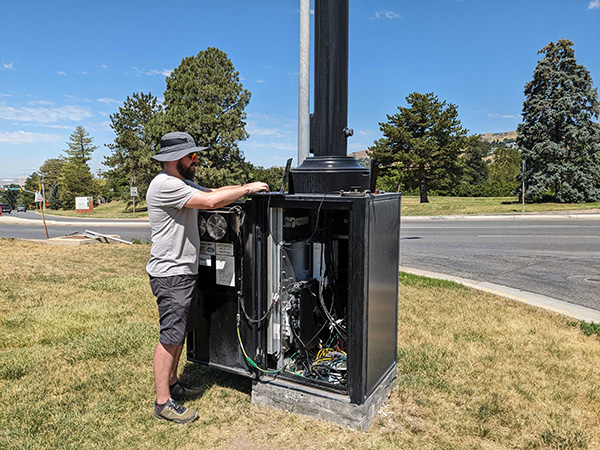As the power and ubiquity of mobile devices increase, so does the strain they put on wireless networks. The continuous rollout of new wireless deployments, such as the current “5G” standard, is necessary to keep up with this demand.
However, upgrading these standards is a massive undertaking, especially as they rely on a patchwork of physical hardware that must seamlessly communicate with user devices as they hop from network to network.

The University of Utah’s POWDER network exists to study and test such standards, ensuring these critical systems are functional and stable before they are opened to the public. But POWDER can’t do this work in a vacuum — the enormity of the task and its distributed nature means that extensive public-private partnerships are necessary to link and coordinate these efforts.
To support that mission, POWDER has now been designated an “Open Testing and Integration Center” (OTIC) by the O-RAN ALLIANCE, an international organization of commercial wireless providers, vendors and academic institutions that establish standards and aim to improve the interoperability of mobile networks. Standing for “Open Radio Access Networks,” members of the O-RAN alliance commit to implementing freely accessible, standardized architectures for wireless systems, avoiding the balkanization that could stem from independent, proprietary efforts.
“We are very pleased with POWDER’s OTIC designation,” said Kobus Van der Merwe, Professor in the Kahlert School of Computing and Director of the POWDER platform. “Being an OTIC will allow POWDER to provide 5G/6G and specifically Open RAN testing, development and certification services, and form the basis for continued collaborative research efforts with industry partners. POWDER’s automated testing and lab-as-a-service features and the fact that POWDER provides both indoor and outdoor facilities are unique capabilities in this domain.”
POWDER’s OTIC designation comes through its participation in a similar U.S.-based collaborative known as PAWR, or Platforms for Advanced Wireless Research. Established in 2016, the $100 million public-private partnership is supported by the National Science Foundation and a consortium of dozens of wireless industry members.
The group’s ARA, based at Iowa State University, and Colosseum, part of the Institute for the Wireless Internet of Things at Northeastern University, also received OTIC status alongside POWDER. The three programs join PAWR platform COSMOS, a collaboration between New York University, Rutgers University, and Columbia University, which was designated a OTIC earlier this year.
“By becoming OTICs, the PAWR testbeds are advancing important innovations in wireless research from the academic community and beyond and helping to bridge the gap between government investment and industry-driven change,” said Margaret Martonosi, NSF Assistant Director for Computer and information Science and Engineering. “Wireless communications are vital to both the public and private sectors, and through the services these platforms will provide as OTICs, the PAWR testbeds will accelerate the timeline that begins with cutting-edge research and leads to successful deployment of new wireless technologies.”
“The PAWR platforms are establishing themselves as premier centers of excellence for Open RAN research and testing,” said Mari Silbey, PAWR Program Director. “This expansion of our testing ecosystem is critical not only for accelerating O-RAN deployments, but also lowering the barrier to entry for companies bringing critical new wireless innovations to market.”